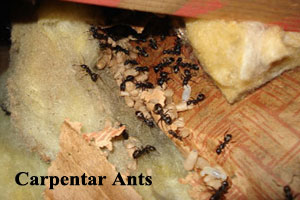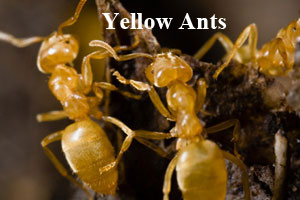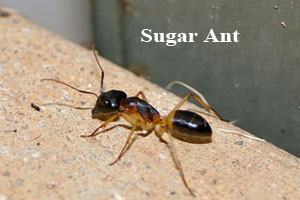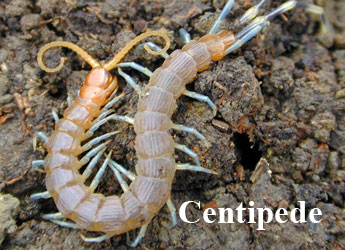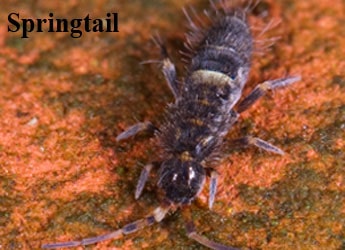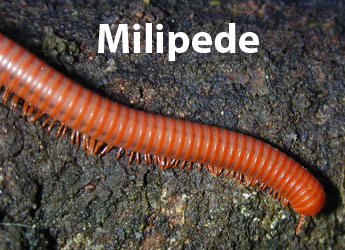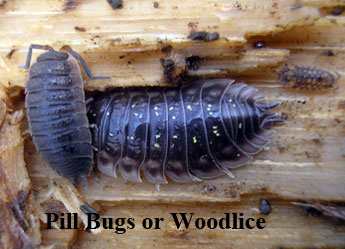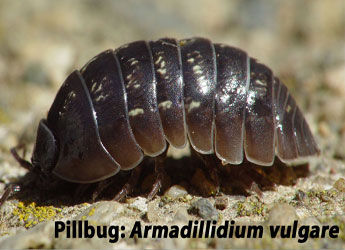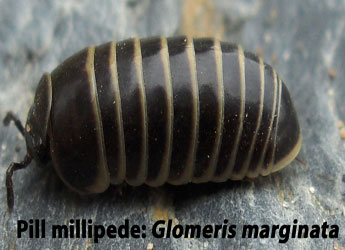Pest Control Services in
Fort Collins, CO
Front Range Pest Control of Fort Collins Inc. handles pest control services for northern Colorado homes. Call 970-203-1911!
Pest Control Services
Front Range Pest Control of Fort Collins Inc. takes pests very seriously! Our expert pest control technicians will design a treatment plan specifically for your pest situation.
Our Pest Control Services include but are not limited to ants, insects, mosquitoes, beetles, flies, wasps, stinging insects, roaches, spiders, mice, rats, voles, and most other common pests in Colorado.
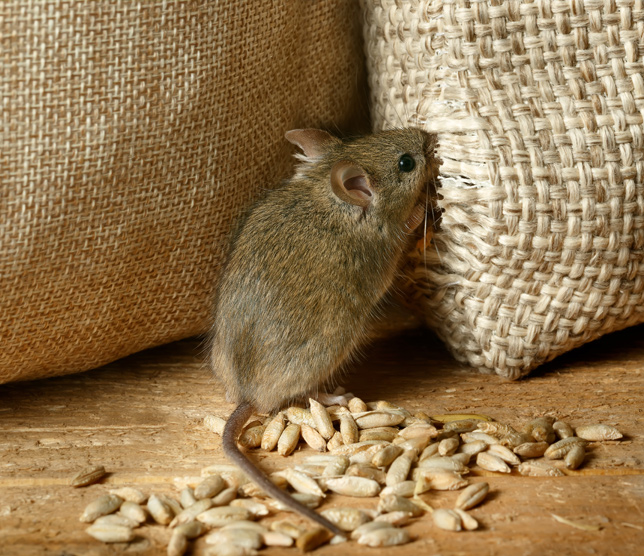
Front Range Pest Control of Fort Collins Inc. Services
- Residential Pest Control
- Commercial Pest Control
- Ant Control
- Insects & Spiders
- Mosquitoes
- Rodents
Seasonal Pests
The Spring and Fall brings the intrusion of bugs and other insects that come from lawns, trees and other plants. When a change in season occurs, insects sometimes seek shelter in cracks, crevices and voids to survive. They easily become pests inside structures and can be very annoying to deal with. If insects or other pests are seeking shelter where they are not wanted, give Front Range Pest Control of Fort Collins Inc. a call at 970-203-1911.


Seasonal Pest Control
Front Range Pest Control of Fort Collins Inc. provides seasonal pest control services. Each visit is customized to your home or commercial building and will fit the needs of the property owner.
Spring Service
Stop the invasion of ants, beetles, spiders, wasps, yellow jackets and other pests that may enter your home or business from the outside. Front Range Pest Control of Fort Collins Inc. exterior pest barrier will prevent these unwanted critters and bugs from migrating into your home or business.
Summer Service
Our summer service will target seasonal stinging insects and prevent them from nesting in or around your home or business and under your decks and patios. We will also pay special attention to areas where yellow jackets, earwigs, spiders, crickets and ants invade or nest and treat them at the source.
Fall Service
During the Fall season is when insects and rodents enter your home. This service is concentrated on the outside of your home to keep pests from entering during the winter season. An Inside Inspection is made as well to determine what preventative treatments will be used for both insects and rodent activity that we encounter.
Winter Service
Our winter service will concentrate on the interior areas of the home and identify any pests that have entered. Treatments will be used for the pest activity that is encountered.
Residential Pest Control
Front Range Pest Control of Fort Collins Inc. uses the most advanced pest control techniques to keep pests out in order to protect your family and home. Ants, spiders, wasps, mice, and other creepy bugs that do not belong in your home. We offer seasonal services that are specifically designed to keep unwanted insects and other small animals from entering your home.
Our goal is to provide the most effective treatment available with the least impact on the environment, your family, and your house. Each pest control visit is customized to the needs of your property.
Front Range Pest Control of Fort Collins Inc. offers One-time Service, Monthly Service, Bi-monthly Service, Quarterly Service, Annual Service, and Twice a Year Service for the Spring and Fall.
We will customize a service plan to fit your needs.

Call 970-203-1911 to set up a Residential Pest Control Appointment Today!
Commercial Pest Control
Almost all businesses get pests, and the costs to establishments like yours can be enormous. Fortunately, there’s a very effective solution.
Front Range Pest Control of Fort Collins Inc. provides quality pest control for all types of commercial properties by trained and certified technicians. We understand the difficulties associated with pest control. Comprehensive training keeps our technicians informed of the latest procedures covering hundreds of pest control strategies.
Our promise is to inspect, communicate with you and your staff, identify the problem, and then treat with the safest strategy available until the pest problem has been controlled.
We’ll design a program specifically for your needs and your budget.

Call 970-203-1911 to set up a Commercial Pest Control Appointment!
Ant Control
Front Range Pest Control of Fort Collins Inc. has trained professional experts in ant control in or outside the home, as well as any type of structure. We will formulate a plan to fit your needs, no matter how large the ant problem is that is infesting your space.
Ants in the Home
Almost anywhere in the state one travels, ants will be the most common insects that can be found in yards, gardens, fields and forests. Tremendous numbers of ants normally reside in a typical house lot, although most lead unobserved lives underground or otherwise out of sight. Often it is only when they occur indoors or produce their periodic mating swarms that they come to human attention.
Overall, the activities of ants are quite beneficial. Many feed on other insects, including pest insects. Ant scavenging helps to recycle organic matter and their tunneling is useful in aerating and mixing soils. On the other hand, ants sometimes promote the activities of certain plant pests, notably aphids, that excrete sweet sugary honeydew that is favored by many ants.
Ants most prominently become problems when they are found in homes. Most ants found indoors in Colorado are merely foragers, seeking food or water in a home but returning to colonies they have established outdoors. A small number of the ants found indoors may become more permanent residents and establish a nest within a building. This ability to nest indoors is most often associated with pharoah ants; some colonies of pavement ants and carpenter ants may establish within a building.
Ants Commonly Found in Colorado Homes
Pavement ants (Tetramorium caespitum)
are ants to have first found their way to Colorado only in the past few decades but now are often the most common species that people notice (Figure 2). They characteristically produce small mounds of soil at entrances of their nest, and nests are often located under pavement or rocks (Figure 3). They are small ants (1/10-1/16-inch), dark-brown colored and have fine grooves that line their head. Pavement ants forage a wide variety of foods, usually consistently preferring greasy materials. Feeding habits shift during the season with higher protein materials being sought when young are being reared and sugars more favored at other times.
Field ants (Formica species)
are among the most common ants found in yards and gardens and are observed in homes most commonly in spring (Figure 4). They are black or reddish-brown and black ants of medium size (3/16-1/3 inch) and sometimes are mistaken for carpenter ants. The nest outdoors in loose soil and some produce mounds that incorporate twigs, dried leaves and other plant materials. Migrations into homes occur in spring when soils warm enough to cause colonies to resume activity but cool temperatures prevent normal foraging in yards. Field ants feed on a variety of foods but most often are observed visiting sweet honeydew excreted by aphids and or other sweet materials.
Carpenter ants (Camponotus species)
are the largest ants that occur in Colorado (1/4-3/8 inch) and are particularly abundant in forested areas. They may be either black or black with a reddish brown thorax. They are most similar to the field ants but can be distinguished by examining them in side view, with the thorax of the carpenter ants being uniformly rounded without indentation. Carpenter ants nest in wood, almost always establishing colonies in wood that has been softened by decay. Carpenter ants found in homes almost always are foragers that will return to an outdoor nest in the yard. Rarely they will establish a nest in the building, always at some point of previous water-damage. Carpenter ants (Figure 5) mostly feed on a mixture of dead insects and honeydew.
Cornfield ants (Lasius species)
are relatively small ants (less than 1/8 inch) that are usually light to medium-brown colored. They nest outdoors but sometimes will enter buildings to feed on sweet materials.
Odorous house ants (Tapinoma sessile)
are small (1/10-inch) black ants that have only recently been found in Colorado (Figure 6). When disturbed, they will raise their abdomen and emit an odor reminiscent of coconut. They do not nest indoors but may enter to forage on various foods including sweets, cooked vegetables, fruit slices and pastries. Heavy mulch adjacent to building foundations has been associated with increased problems with odorous house ants.
Pharoah ants (Monomorium pharoaensis)
are minute (1/12 inch), lightbrown ants that are adapted to nesting in buildings. Nests can spread extensively through a structure as pharoah ants may frequently move nest locations, produce multiple queens, and may split to form “satellite” colonies. Pharoah ants feed on a wide range of foods that include syrups, jellies, grease, cake, and pet foods. They can be serious pests of hospitals, dormitories and apartments.
Management of Household Ants
The first and most important step to reducing problems with ants occurring in homes is to eliminate sources of food and water that are attractive. In addition to obvious sources of food left on counters, sinks or floors, spilled food in cupboards and food associated with trash baskets may also be visited by foraging ants. Dripping faucets and leaking pipes may also be important water sources that ants will use. Also, if ants have been foraging in a home, wash down counters or floors with some household cleaner to eliminate the odor trails the ants have established to locate sources of food or water.
Most ants found in homes nest outdoors, sometimes adjacent to building foundations. Heavy mulch, piled leaves or ground covers that abut buildings can provide cover for ant colonies and can increase the likelihood of their subsequent occurrence in a house. Keeping the area around the building foundation free of cover can reduce the likelihood of ants foraging indoors.
Insecticides can be useful to control ants and a wide range of ant control products are available. These are primarily used either to: 1) generally suppress ant numbers in a yard; 2) establish perimeter barriers around a home; 3) spot treat foraging ants found in homes; or 4) incorporate into baits to kill colonies.
Give Front Range Pest Control of Fort Collins Inc. a call at (970) 203-1911 to get your Ant Problem under control!
Insects & Spider Control
Front Range Pest Control of Fort Collins Inc. has trained professional experts in pest control of all common pests in the home or any type of structure. We will formulate a plan to fit your needs, no matter what type of pest is infesting your space.
Bug & Insect Control
Common Insects that tend to be pests are Centipedes, Flies, Boxelder bugs, Crickets, Millipedes, Springtails and Sow Bugs. Many of these insects are harmless to humans, but they leave their excrement that may spread disease to humans.
The Boxelder bug can be a very annoying bug to homeowners. It is actually known to be a nuisance more than a pest. They usually do very little damage indoors, although the bug’s excrement may stain light-colored surfaces like drapes and walls. When crushed they produce a foul odor.
Centipedes
are a gross thing to find in your house. Many times people find them near a water source, like a drain or a toilet. People usually assume that the centipede got there by crawling up through the drain pipe, but that actually is not true. Although centipedes do live in damp areas, they do not crawl around through pipes.
The Cluster Fly
Is a nuisance pest for homeowners. It does not bite people, carry diseases, reproduce inside, nor cause any real damage to a home. Cluster Flies are about five-sixteenths of an inch long; they are gray with golden-toned hairs on their thorax. Spotting them is easy because they are usually all clustered together on walls outside, sunning themselves. This is also where their name comes from, because when resting they usually will be clustered near each other. The cluster flies are similar to many other pests as they just want to get inside houses to stay warm. With this in mind, the winter time is when people will most often find cluster flies inside their homes.
Spider Control
Front Range Pest Control of Fort Collins Inc. has trained professional experts in spider control. Spiders have venom used to immobilize their prey. The Black Widow Spider is found in Colorado and is dangerously venomous.
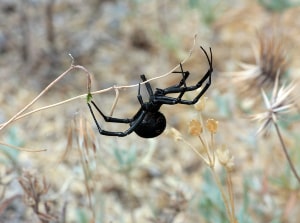
Black Widow
The female black widow spider has a shiny round, black body with a red hourglass shape on the underside of the abdomen. This shape can be broken or appear almost in spots. Sometimes there can be red markings on the top of the abdomen as well. The male is smaller and tan with a brown hourglass shape on the underside of the abdomen. The black widow’s venom is a neurotoxin, which affects the nervous system and can be quite painful. Front Range Pest Control of Fort Collins Inc.’s Spider Control and Spider Removal Specialists are fully licensed and insured for your Peace of Mind.
Brown Recluse
The brown recluse spider, sometimes called the “fiddleback” spider, is tan with a distinct black violin shape on the cephalothorax (head fused with the thorax or middle part). The brown recluse has six eyes, displayed in two rows of three on each side of the cephalothorax. This spider has a toxin that causes tissue around the bite to die. Left untreated, a brown recluse bite can lead to gangrene, amputation and even death.
Brown recluse spiders are not common in Colorado, but they are found in the state on some occasions. They may have been brought here by trucks, trains, cars and people traveling in and out of the state.

Wolf Spiders
Are robust and agile hunters with good eyesight. They live mostly solitary lives and hunt alone. Some are opportunistic wanderer hunters, pouncing upon prey as they find it or chasing it over short distances. Others lie in wait for passing prey, often from or near the mouth of a burrow.

There are many genera of Wolf spider, ranging in body size from less than 1 to 30 millimetres (0.04 to 1.18 in). They have eight eyes arranged in three rows. The bottom row consists of four small eyes, the middle row has two very large eyes (which distinguishes them from the Pisauridae), and the top row has two medium-sized eyes. They depend on their eyesight, which is quite good, to hunt. Their sense of touch is also acute.
Wolf spiders are unique in carrying their eggs along with them in a round silken globe, or egg sac, which they attach to the spinnerets at the end of their abdomen. The abdomen must be held in a raised position to keep the egg case from dragging on the ground, but they are still capable of hunting while so encumbered. Also unique to wolf spiders is their method of infant care. Immediately after the little spiders hatch and emerge from their protective silken case, they clamber up their mother’s legs and all crowd onto her abdomen.
Their eyes reflect light well, and one method of finding them is to hunt at night using a flashlight strapped to one’s forehead so that the light from the flashlight is reflected from their eyes directly back toward its source. This is also especially helpful because the wolf spiders are nocturnal and will be out hunting for food, making it easier to find them. Because they depend on camouflage for protection, they do not have the flashy appearance of some other kinds of spiders. In general their coloration is appropriate to their favorite habitat.
Toxicity
Wolf spiders will inject venom freely if continually provoked. Symptoms of their venomous bite include swelling, mild pain and itching. Though usually considered harmless to humans, the bite of some species may be painful. In the past, necrotic bites have been attributed to some South American species, but further investigation has indicated that those problems that did occur were probably actually due to bites by members of other genera. Australian wolf spiders have also been associated with necrotic wounds, but careful study has likewise shown them not to produce such results.
Habitats
Wolf spiders can be found in a wide range of habitats both coastal and inland. These include shrublands, woodland, wet coastal forest, alpine meadows, and suburban gardens. Spiderlings disperse aerially and consequently wolf spiders have wide distributions. Although some species have very specific microhabitat needs (such as stream-side gravel beds or montane herb-fields) most are wanderers without permanent homes. Some build burrows which can be opened or have a trapdoor. Arid zone species construct turrets or plug their holes with leaves and pebbles during the rainy season to protect themselves from flood waters.
Give Front Range Pest Control of Fort Collins Inc. a call at 970-203-1911 to get your Insect or Spider Problem under control!
Mosquito Control
Mosquitoes are a major insect pest problem in Colorado and may seriously deter outdoor activities and tourism. These insects cause economic losses in cattle and other livestock through blood loss, disease transmission and irritation. Mosquitoes also can transmit certain human diseases such as West Nile virus and Western Equine Encephalitis. The incidence of mosquito-transmitted disease in Colorado is closely monitored by public health agencies.

West Nile Virus: What causes it?
The infection is transmitted by mosquitoes. They acquire the virus after biting an infected bird, and then they bite us. In 2006 there were 4269 cases of West Nile Virus with 177 deaths. Virus transmission occurs mostly during warm weather, when mosquito populations are active. In the northern part of the country, infections occur mainly in the summer and early fall, but in the warmer southern regions, the virus can be transmitted all year. The incubation period – or the period between when you’re bitten by an infected mosquito and the appearance of signs and symptoms of the illness – ranges from two to 14 days.
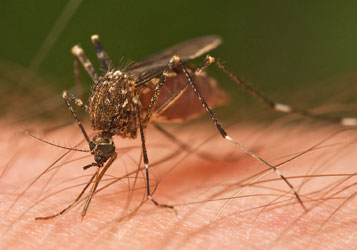
Signs and Symptoms:
Most of the time, infection with West Nile virus makes people mildly sick. A person may get flu-like symptoms such as fever, headache, body aches, and sometimes skin rash and swollen glands. More severe infection can result in encephalitis, which includes symptoms of severe headache, high fever, neck stiffness, disorientation, and sometimes convulsions. It’s rare but, severe West Nile infection in healthy, younger people can be fatal, but the elderly are at greatest risk for severe complications.
How to know if you have West Nile Virus:
The virus causes an infection that can lead to inflammation of the brain (swelling) much like encephalitis, or swelling of the spinal cord, or the tissues surrounding it and the spinal cord like meningitis. If the doctor thinks you might have the virus, they will ask you questions to see if you were at risk for getting the virus. If you have symptoms that the virus is affecting the brain and spinal cord a blood test will be done to see if you have antibodies to the virus. And sometimes a Lumbar Puncture (spinal tap) is done to look for the virus.
Treatment for the Virus:
There is currently no specific treatment for the virus. Mild infections go away on their own. But severe cases of encephalitis are treated with supportive care in a hospital. This care involves helping the body fight illness on its own. It often is used when no specific treatment exists for an illness, as is the case with some viruses. Treatment for West Nile virus can include receiving fluids through IV, or help with breathing using a ventilator, and prevention of another infection like pneumonia.
Rodent Control
Front Range Pest Control of Fort Collins Inc. has trained professional experts in Vole, Mouse and Rat Control.
Rodent Control is the solution to some of the most destructive, dirty, and dangerous pests to have in or around your home. Since they are rodents, they must constantly chew or gnaw on hard materials to keep their teeth worn down. This can include almost any part of your home, including wood, metal or plastic pipes, siding, air conditioning ductwork, wiring, even concrete! Not only is it destructive, their affinity for wiring insulation can cause a fire hazard. They can breed up to 6 times in a year, producing 5-10 babies each time. Once they take up residence in your home, they can quickly multiply, increasing the damage and danger to you and your property. Our pest control experts are professionally trained in rodent control.
Rats and Mice
Rats
have very poor eyesight, and they adapt to this shortcoming by urinating and defecating almost constantly. They follow these trails of urine and droppings (also call pellets) to find their way around their environment, and in and out of your home or business. These droppings can create odor problems, as well as diseases, including salmonella, hantavirus, tularemia, and many others. Homes with a rat infestation will often require rat control and rat removal with extensive repair and cleanup (disinfecting) in order to make them safe to live in.
There are three types of rats that typically cause rat control problems in the United States. They are the Packrat (also called a Woodrat), the Norway Rat and the Roof Rat. The Packrat has a rat appearance with a long bushy tail, large ears, and big black eyes. Packrats are nest builders and use twigs, sticks, and any other available debris to construct their nest. They can be quite destructive getting into everything and will opportunistically move into attics, walls, crawl spaces, and even vehicle engine compartments. They will often damage electrical wiring and easily become a nuisance. The Norway Rat invades homes, but his cousin the Roof Rat is a better climber and even more destructive and is often found in the attics of homes and businesses. Although they are different species, they inflict the same type of damage and cause the same dangers to you, your family, and your property.
Rat Control and extermination of rats involves a series of steps in many situations. The first step is rat removal, which usually means trapping all of the rats living in the structure. Rodenticides or poisons are usually not the best way for rat removal of the infestation initially because they often cause you to have dead and decomposing animals in the structure of your home, which can lead to further contamination, terrible odors, and insect problems. A thorough inspection to identify entry points on your home will often reveal a need for exclusion to prevent reentry once the initial rat removal is completed. Because rats can squeeze through very small openings, it is often impossible to fully “rat proof” a structure. In many cases, we can implement a rat control program to prevent are infestation which will include rat control re treatment if needed.
Mice
Don’t think just because mice are small that they are any less destructive to your home and property. They can enter through even smaller openings, and they reproduce just as quickly. As a matter of fact, they are actually more prevalent than rats are across the country. There is literally nowhere that they are not found, and they have even been known to make their way into homes in the packing of furniture and appliances straight from the warehouse! Without professional mice control treatment, there is no way to be fully protected from these little pests. They carry the same dangers and diseases that their larger cousins do, and can be even harder to detect and remove due to their small size and smaller range.
House Mouse Diseases
The Common House Mouse and the Diseases it Carries
There are some diseases that have been linked directly to rodents. A virus that the common house mouse carries is the Hantavirus. This virus can be fatal and is only transmittable through breathing in the air where rodent urine, feces, or dead bodies can be found. If a person is infected with the Hantavirus, they will not necessarily notice symptoms right away. Once the symptoms become noticeable they will be similar to the flu and last for up to five days, then a person will suffer from breathing difficulties. Often a person is so ill at this time they are taken to a hospital for treatment, if not treated soon enough the outcome can be deadly, as the survival rate without proper treatment is low. This one virus from small little mice can cause a huge danger to any home.
It is a serious matter and as soon as you notice common house mice in your home a professional pest control agent should be called. Having your house treated by a professional exterminator will help prevent any diseases from spreading as soon as possible. If you cannot afford to call an exterminator there are at-home methods to get rid of mice, but that adds the risk of being exposed to the feces and diseases and the risk of not cleaning it up entirely or missing areas. In any case, the best choice is to have a professional pest control company handle the problem. If you detect the common house mouse within your home you can confirm it by the particular smell the common house mouse leaves behind. It is a musky smell from the common house mouse’s feces. Wearing a mask is a precaution if you do find droppings, and see a doctor to ensure your health has not been affected.
The Hantavirus isn’t the only disease the common house mouse and rodents carry. Diseases carried by rodents can also be spread to humans indirectly through ticks, mites or fleas that have fed on an infected rodent such as:
- Murine typhus
- Rickettsialpox
- Tularemia
- Bubonic plague
Protect your home, your family and your pets by having Front Range Pest Control of Fort Collins Inc. eliminate the disease-infested rodent, the common house mouse. Call 970-203-1911, to set up your pest control appointment Today!
Voles
Voles are small rodents resembling a mouse but with a stouter body, a shorter hairy tail, a slightly rounder head, smaller ears and eyes, and differently formed molars (high-crowned and with angular cusps instead of low-crowned and with rounded cusps). There are approximately 155 species of voles. They are sometimes known as meadow mice or field mice in North America. Vole species form the subfamily Arvicolinae with the lemmings and the muskrats.
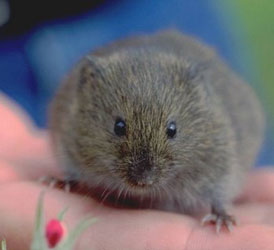
Vole Description
Voles are small rodents that grow to 4-8 inches depending on species. They can have 5-10 litters per year. Gestation takes for 3 weeks and the young voles reach sexual maturity in a month. Needless to say, vole populations can rapidly grow from one or two to many within a very short period of time. Since litters average 5-10 young, a single vole in the yard can become 50 or more in less than a year.
Voles are commonly mistaken for other small animals. Moles, gophers, mice, rats and even shrews have similar characteristics and behavioral tendencies. Since voles will commonly use burrows with many exit holes, they can be mistaken for gophers or some kind of ground squirrel. Voles can create and will often times utilize old abandoned mole tunnels thus confusing the land owner into thinking that moles are active. When voles find their way into the home, they are readily identified as mice or young rats. In fact, voles are unique and best described as being a little bit like all the other animals they are so commonly thought to be.
Like moles, they will readily thrive on small plants. Like shrews they will eat dead animals and like mice or rats, they can live on most any nut or fruit. Additionally, voles will target plants more than most other small animals. It is here where their presence is mostly evident. Voles will readily “girdle” or eat the bark of small trees and ground cover much like a porcupine. This girdling can easily kill young plants and is not healthy for trees or other shrubs.
Voles love to eat succulent root systems and will burrow under plants or ground cover they are particularly fond of and eat away until the plant is dead. Bulbs in the ground are another favorite target for voles; their excellent burrowing and tunneling gives them access to sensitive areas without clear or early warning. A vole problem is often only identifiable after they have destroyed a number of plants.
If you know or suspect your home may be in need of vole, rat or mice control or removal, don’t wait! Call Front Range Pest Control of Fort Collins Inc. We have Rodent Removal Specialists who are fully licensed and insured. We are experts at rodent control, removal and prevention of rodents in both residential and commercial areas.
Front Range Pest Control of Fort Collins Inc. specializes in pest control services for homes and commercial spaces in Fort Collins, Colorado and areas north to Wyoming. BBB-accredited, we commit to a safe and humane process in getting rid of unwanted pests within your property.
Office Address
301 Boardwalk Drive
#270975
Fort Collins, CO 80527
Business Hours
Mondays - Fridays
9:00am to 5:00pm
Saturdays by Appointment
Front Range Pest Control of Fort Collins Inc. Service Areas include Bellvue, Fort Collins, Laporte, Livermore, Red Feather Lakes, Glacier View, Virginia Dale and Wellington.


